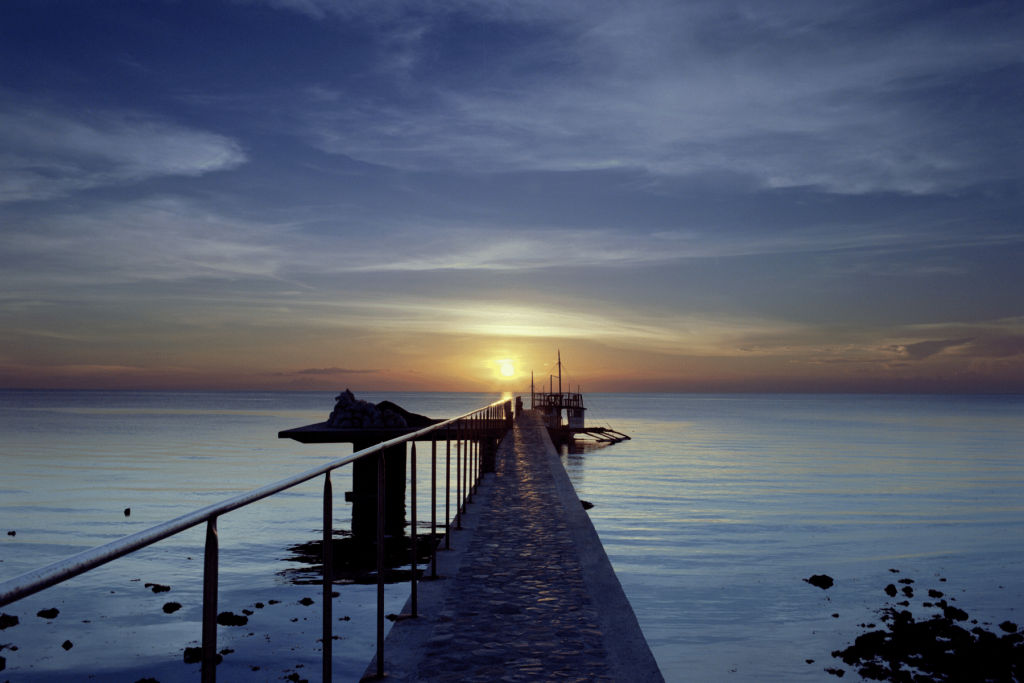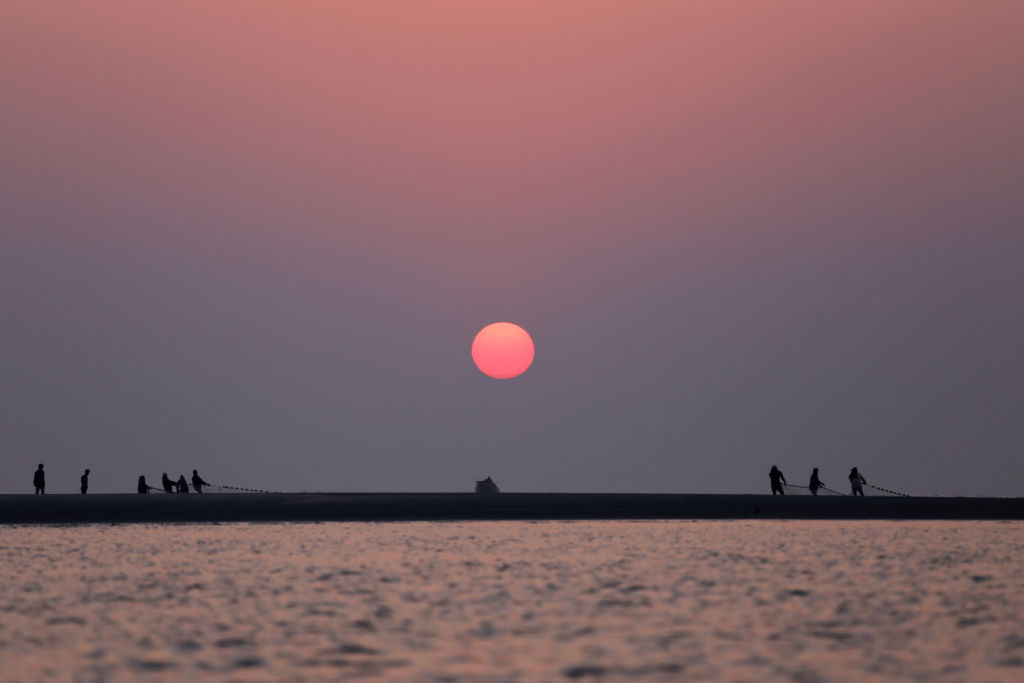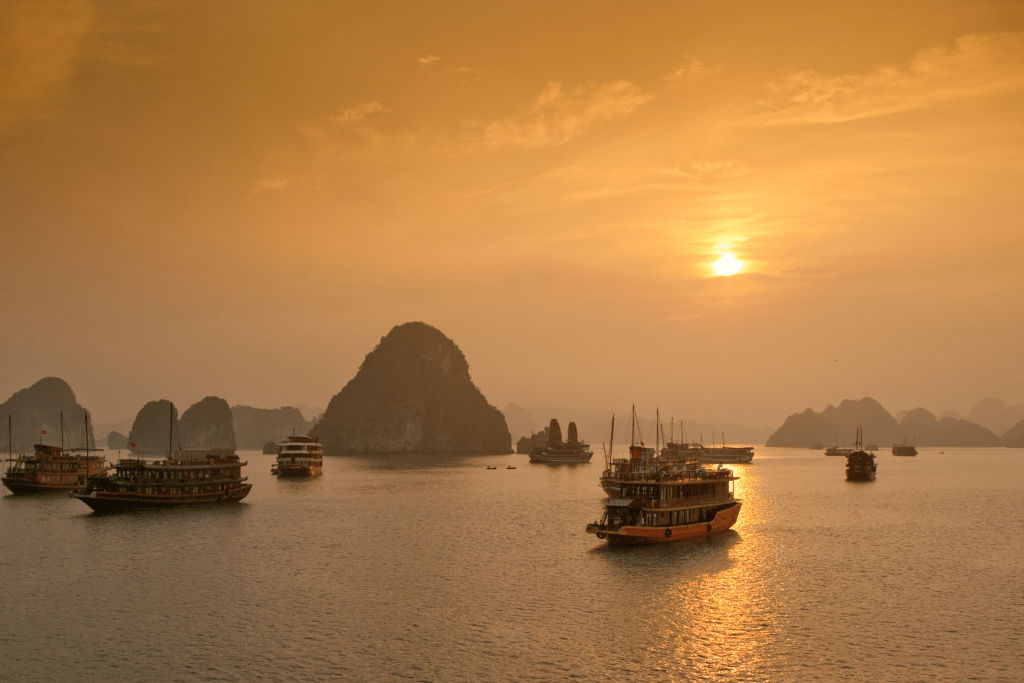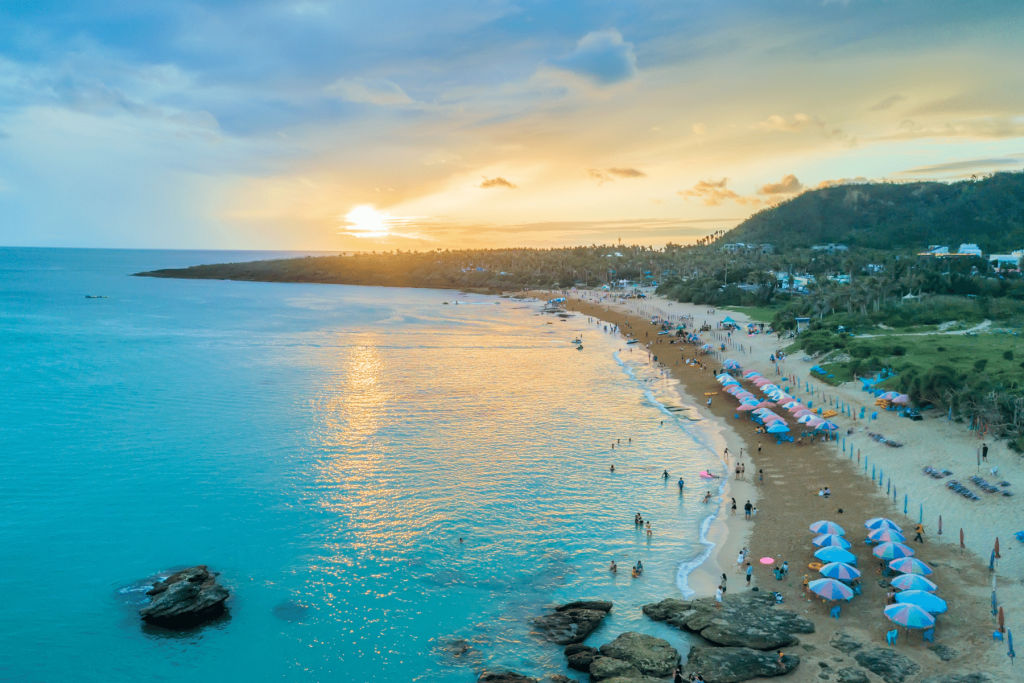
Which is best, east or west? No need to pick if you head to one of these destinations where you can watch both sunrise and sunset in all their golden-hour glory.

THE GOLDEN HOURS ARE SPECIAL, particularly over the water. So special, in fact, that smart resorts market their rooms—or indeed, whole properties—by which direction they face, knowing that early risers might prefer a completely different view from sundowner-sippers. But what of us who want to watch both sunrise and sunset? Who want a little dawn yoga and dusky romance in our lives? It’s a harder ask than you might think, what with directions determining things and all. No matter how much we fit into our (holi) days, there’s only ever a select hour or so per day to watch that golden orb rise or fall—and being mindful of the passage of time, whether you mark it with a rousing ritual or simple silent reflection, is an easy way to conjure awe in our lives. Just ask Instagram.
We’re created this list so you can have it all. Here are 4 idyllic seaside places across Asia where you can watch both sunrise and sunset. The selections might surprise you… and they’ll definitely delight.
Romblon Island, Philippines

Home to some 7,600 islands, all in gorgeous tropical waters, the Philippines ensures no shortage of shoreline spots to watch both sunrise and sunset. But perhaps you’ve never heard of this one.
An overnight ferry ride off the southern tip of Luzon chugs you to the small island of Romblon—one of those rare spots in the Philippines that hits that harmonious balance between tourism, industry, and traditional life where all thrive without negatively affecting each other. Renown in the art world for its abundance of Italian-quality marble, quarried and often hand-crafted on-site (from palm-sized animal sculptures to fountains and entire rocking chairs), this island is a draw for its architecture, white sand beaches and pristine jungles.

Most importantly, Romblon is at the tip of the Verde Island Passage, known as the center of the center of marine biodiversity, so the place has many mind-blowing dive sites. Prime example: Romblon is home to the Philippines’ only known blue hole—a large marine sinkhole that’s a stunning natural phenomenon.
For sunup, the islets of Casing and Bagasina look out directly over Lio Bay, with the deep offshore waters offering a pastel of morning light reflections. Bon Bon Beach, with an expansive pure white sandbar, faces into the sunset, and while it offers little in the way of hotels or beach bars, the serenity and beauty of this place are far superior to anything manmade. At low tide, you can walk over to the uninhabited island of Bang-og, but make sure you head back before the tide comes in.
For more information on visiting Romblom, head here.
Kuakata Beach, Bangladesh

Way off the beaten tourist trail is Bangladesh’s Kuakata Beach. An 18-kilometer strip of sand that, thanks to its angle, and location at the southernmost tip of the country, enables you to watch both sunrise and sunset over the Bay of Bengal.
Home to more traditional fishing boats and fishermen than hawkers, this area is locally known as Sagar Kannya (“daughter of the sea”). A wide, sandy beach dotted with palm trees makes for a relaxing spot to kick back and view nature’s finest moments.
Just a quick boat ride off the eastern end of the beach brings you to Crab Island, a secluded sanctuary for tens of thousands of red crabs. Kuakata Beach is surrounded by Gajmati Reserve forests to the east—home to a wide variety of migratory birds, monkeys and even wild chickens—and the Kuakata woodlands to the west.
There are no hotels beachside, but the Hotel Graver Inn has a range of rooms starting from US$58, and is a five-minute stroll from the beach.
Ha Long Bay, Vietnam

UNESCO World Heritage site Ha Long Bay, with more than 2,000 limestone islands, is a tourism mecca in Asia, and deservedly so. The best way to avoid the bustle is to dodge the day trips and do a two-night cruise. This will allow you to take in clusters of islands too far for day-trippers or overnighters to get to, and allow you to surrender to the rhythms of the sea and the sun.
Once afloat you can watch both sunrise and sunset from the deck—its ascent over the Gulf of Tonkin and denouement behind the slew of islands, bays and iconic limestone outcrops. Then wait a while longer… because it’s the blue hour, that twilight time between dusk and darkness, when the locals believe Ha Long Bay is at its most beautiful.
Check out HalongJunkCruise, which offers a variety of boats, budgets, and schedules; two-night cruises from US$94 to US$728 per person, based on double occupancy.
Kenting, Taiwan

Taiwan’s southern Hengchun Peninsula is home to a large national park, a historic lighthouse, a vibrant night market, and a host of palm-dotted beaches.
Known locally as the Breezy Peninsula, it’s always pleasantly a couple of degrees cooler than the rest of the country in summer, and warmer throughout winter. Hosting numerous dive sites and clear-water swimming spots, it’s an easy place to watch both sunrise and sunset, simply by going from one side of the cape to the other.
For daybreak, the cliffs overlooking the Pacific, at Longpan Park—and the beach of Fengchuisha, two minutes down the road—are your best spots to start the day. Once the sun pops up, you can see clear to the low mountain range of the southern interior too.
To witness the sun slip into the ocean on the other side of the headland, you’ve got a couple of stunning options. Both the golden sands of Baisha Beach (used as a filming location for Life of Pi) and the hillside area of Guanshan, dotted with cafes—specifically set up for sunset viewing—will serve you right.
Taiwan’s southern cape has a host of things to see; just have a look here.
Hero Image Credit: Ha Long Bay, Vietnam. Kefkenadasi/Getty Images Pro/Canva.










